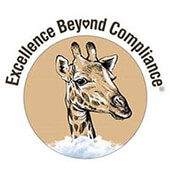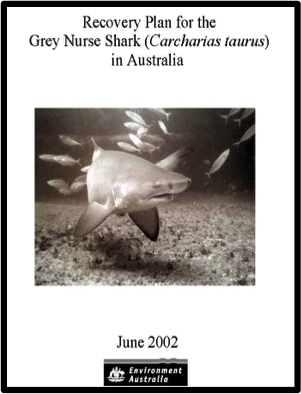Academy Contributors
Getting Better All the Time:
Bringing People Together to Make a Difference (for Animals and People)
 By James F. Gesualdi By James F. Gesualdi
I'm in a Hurry
I'm in a hurry to get things done
Oh I rush and rush until life's no fun
All I really gotta do is live and die
But I'm in a hurry and don't know why.
—Written by Roger Murrah and Randy VanWarmer for Alabama
Why? Why bring people together to help animals? Why read this or ponder anything different or new? As the Alabama song "I'm in a Hurry" reminds us, we sometimes get caught up in the stresses of less than purpose-driven action and lose sight of the reasons for our journey together, and our good work on behalf of animals and each other. Thus, questions like "What can we do today to improve the well-being of animals?" constructively support our mission of making a difference for animals and people, bringing us together now—this very moment—to act toward a common purpose.
High-profile events, the uncertainty of change, holiday-inspired sentiments, year-end reflections or soul searching, and bold initiatives each new day and every year help us to pause and think. We can do that in any and every moment. Course-correcting ourselves and our work moves us closer to our best, and keeps us doing meaningful work for the right reasons.
How we approach our work with animals and people, and all we do—including inevitable challenges, conflicts, and obstacles—can be as important (and sometimes more so) than how well we do what we do. Staying on mission, and taking the long view, reminds us that our constructive means and methods are causes set in motion. Right action is destined to bring about the right results.
Thinking about the end result, effect, or outcome is important, but it is not enough, because how we do things and engage each other should be in harmony with our aims and values. When we act compassionately, constructively, and respectfully in all we do, especially in the face of adversity, we have conversations, establish and nurture relationships built upon trust, and create change that is good, lasting, and sustainable.
To keep ahead, each one of us, no matter what our task, must search for new and better methods—for even that which we now do well must be done better tomorrow.
—James F. Bell
Join us on February 2, 2017, 2 p.m. EST, for Ask Animal Care with Elizabeth Goldentyer, DVM, Eastern Regional Director, and Robert M. Gibbens, DVM, Western Regional Director, USDA, APHIS, Animal Care. Register and submit questions to info@excellencebeyondcompliance.com
Please email me at jfg@excellencebeyondcompliance.com to share the good you are doing (as only you can), or with any comments or questions on this column or suggestions for future ones. For upcoming workshops and sessions, contact: info@excellencebeyondcompliance.com.
© 2016 James F. Gesualdi, P.C. The opinions expressed herein are solely those of the author. This is not, nor should it be construed as, legal advice.
 Something Fishy Is Going On Something Fishy Is Going On
By Dr. Rob Jones, "The Aquarium Vet"
The grey nurse (or sand tiger) shark (Carcharias taurus) is an iconic shark that has been displayed in public aquariums since 1896, when it was first held in the New York Aquarium. It has the most amazing reproductive strategy of any animal on the planet. The male mates with the female and inserts semen via his claspers. The female initially has approximately 12 developing eggs in the two sides of the uterus. After three months, these eggs hatch and the baby sharks eat each other until there is only one left in each side of the uterus (intra-uterine cannibalism). After this the female continues to ovulate, and the two pups (one in each side) feed off these eggs (oophagy) for the next nine months. After a pregnancy of approximately 12 months, two pups are born that are about 1 to 1.2 meters in length and very developed. It is survival of the fittest from day one. This strategy works very well, until humans step in and kill many of the adults (as happened in Australia in the 1960s and 1970s).
 As many of you are aware, I have been researching elasmobranch reproduction since 2004. I thought I would share some of the history, since there are important lessons. This came about because population estimates of the grey nurse shark suggested that there were less than 500 remaining on the east coast of Australia. The federal government drafted a recovery plan in order to avoid extinction. As many of you are aware, I have been researching elasmobranch reproduction since 2004. I thought I would share some of the history, since there are important lessons. This came about because population estimates of the grey nurse shark suggested that there were less than 500 remaining on the east coast of Australia. The federal government drafted a recovery plan in order to avoid extinction.
The Recovery Plan had six key features:
- Reduce the impact of commercial fishing
- Reduce the impact of recreational fishing
- Reduce the impact of shark finning
- Reduce the impact of shark control activities
- Manage the impact of ecotourism
- Eliminate the impact of aquaria.
For those of you wondering, shark control activities include the nets placed along the Australian coastline to protect swimmers at various beaches from shark attacks. Although the Recovery Plan calls for reduction of shark control activities, no politician would remove the beach nets, in case a swimmer might be taken by a shark. In fact, within the past month, new beaches have actually had nets added.
In 2002, with virtually no warning, the aquarium industry was banned from collecting these amazing sharks from the wild. A renewed recovery plan in 2014 did not change these key features. Other groups such as commercial and recreational fishing interests, which account for large numbers of shark deaths per year, are very powerful lobby groups, compared to the public aquarium industry in Australia.
These sharks have traditionally bred poorly in aquariums for a variety of reasons, some of which we now understand and some which still remain unknown. With funding, and a Ph.D. student, Jon Daly, we started researching in 2004 how to safely catch and examine sharks and rays, how to ultrasound and follow egg development, and how to collect semen from males. I will talk more about these processes next month.
I wish all Academy members a safe and happy holiday season and all the best for 2017.
E-quarist™ Courses—Academy Subscriber Special!
The San Diego Zoo Global Academy is excited to share an additional Academy subscriber benefit regarding our collaboration with Dr. Jones: as an Academy subscriber, you are now entitled to a discount on the e-quarist™ courses.
For more information about the SDZGA discount, or to view our Trial Version, please contact katrina@theaquariumvet.com.au.
Visit the Aquarium Vet website at theaquariumvet.com.au. |